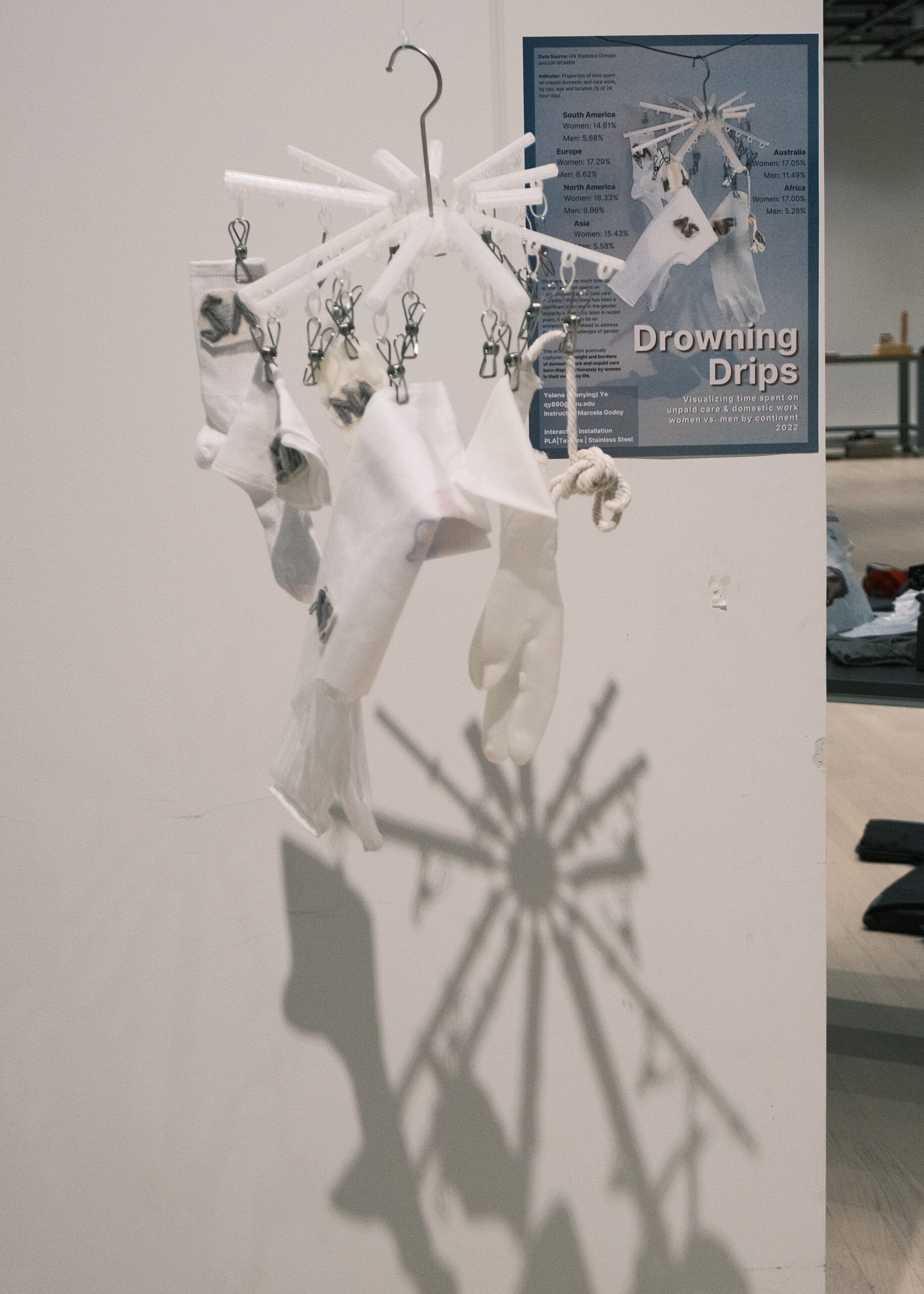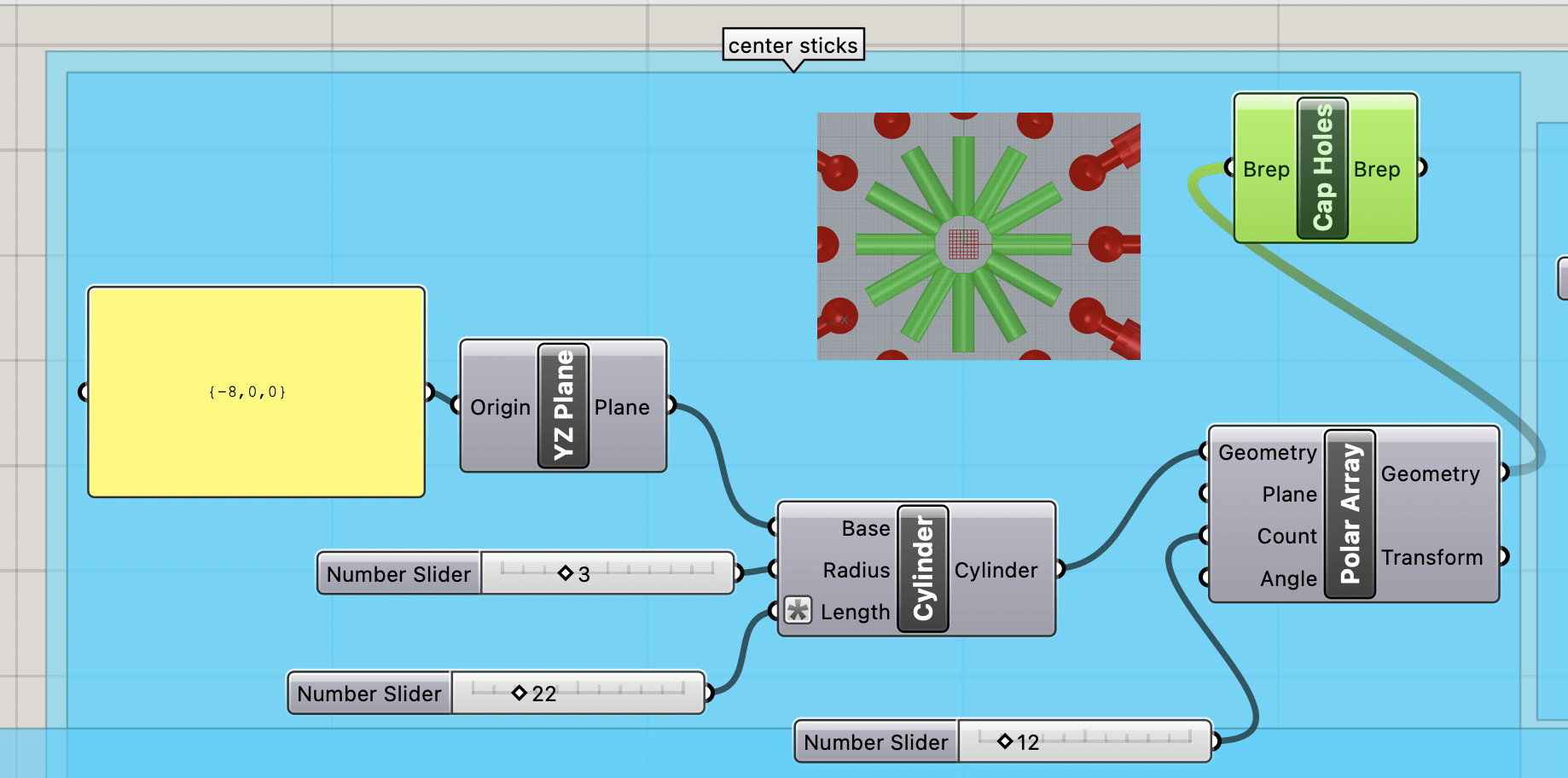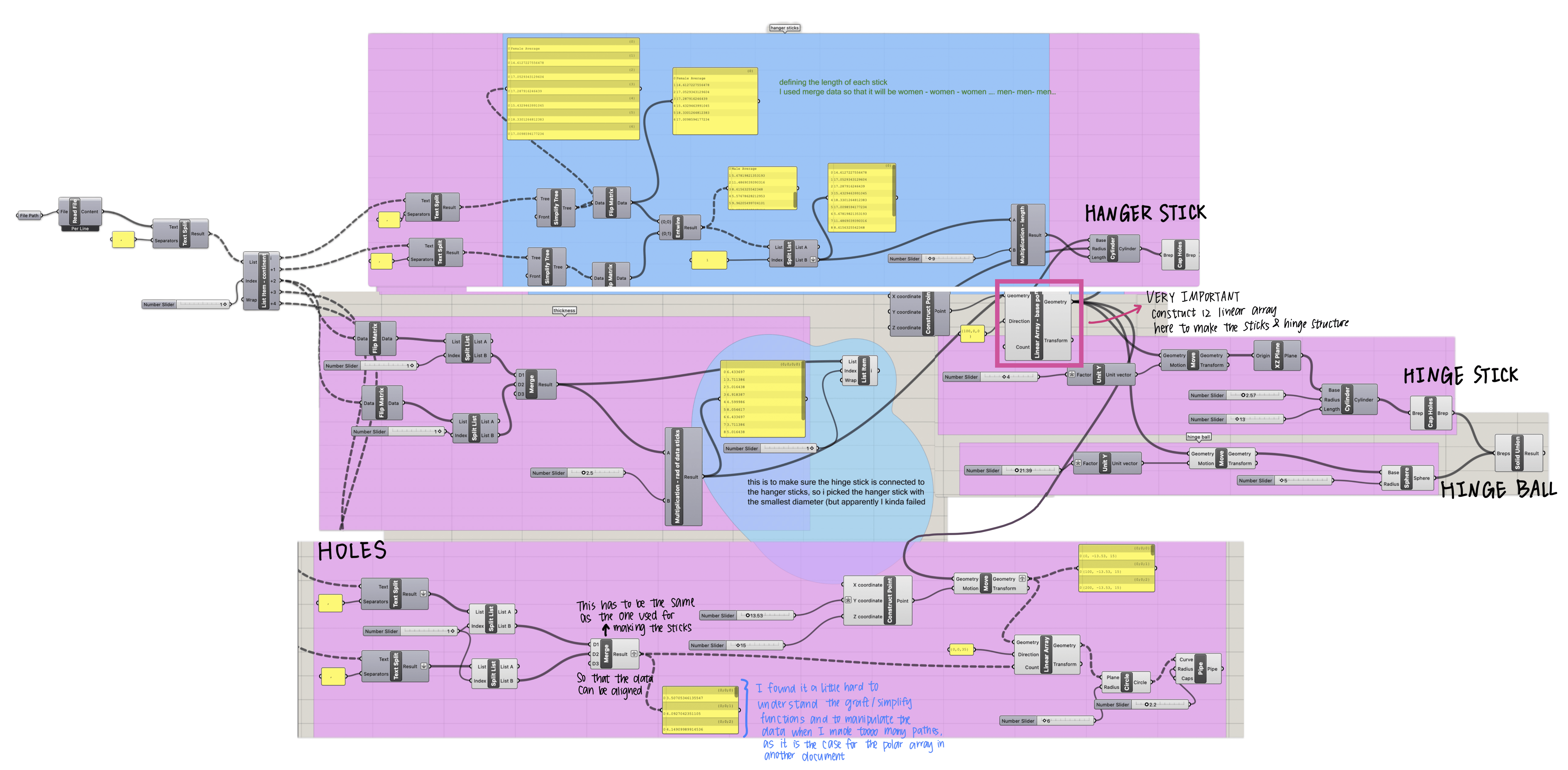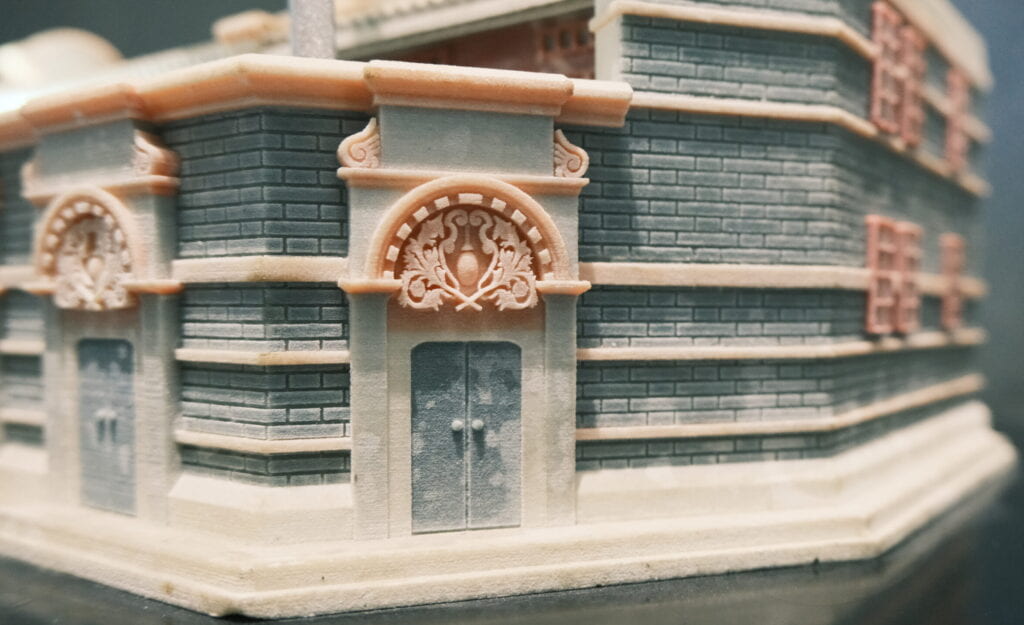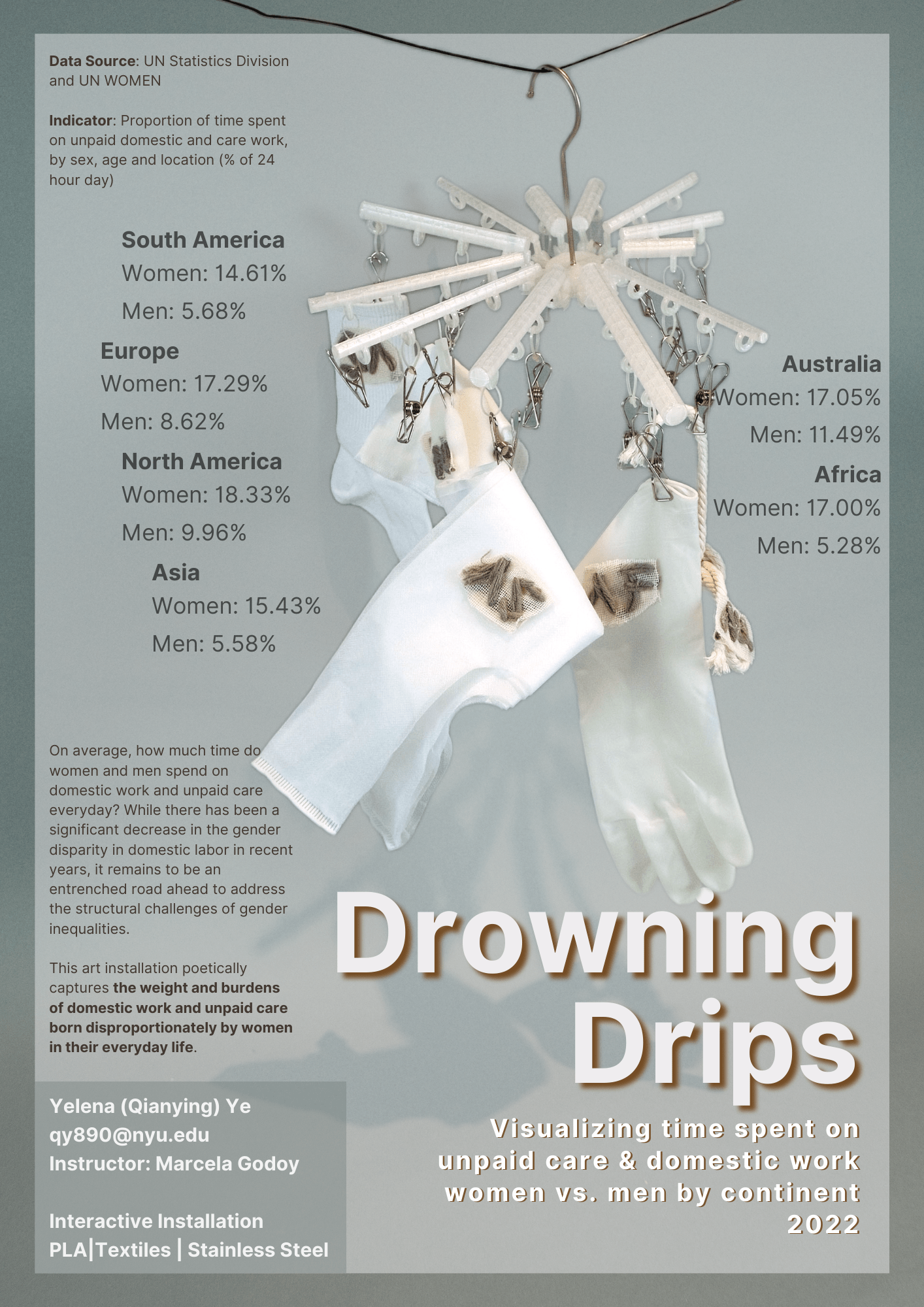
On average, how much time do women and men spend on domestic work and unpaid care everyday? While there has been a significant decrease in the gender disparity in domestic labor in recent years, it remains to be an entrenched road ahead to address the structural challenges of gender inequalities.
This art installation, titled ‘Drowning Drips: A Hanger’s Burden,’ poetically captures the silent struggle encapsulated within the gendered choreography of domestic labor. Sourcing its inspiration from a drip hanger that is commonly seen in the domestic sphere, and embedded with data from UN Statistics Division and UN WOMEN, this art installation aims at visually presenting the weight and burdens of domestic work and unpaid care born disproportionately by women in their everyday life.
- Length of each hanger hand: defined by the percentage of time spent on housework each day by men and women from different continents
- Radius of each continental data: defined by the ratio of women and men’s time investment
- Number of holes on each stick: showing the approximate hours of housework
- Embroideries: showing the continents — AF (Africa)/ AS (Asia)/ AU (Australia)/ EU (Europe) / NA (North America)/ SA (South America) [in the alphabetical order :)]. They are attached to objects commonly seen and usually associated with women and housework in the domestic sphere
- The white/ half-transparent/ grayish colors: to present how mundane and plain these domestic works are. Yet in contrast with the variety of the objects, it points out the sharp reality that so much responsibility is burdened on her just because she is the adult female figure in the household
